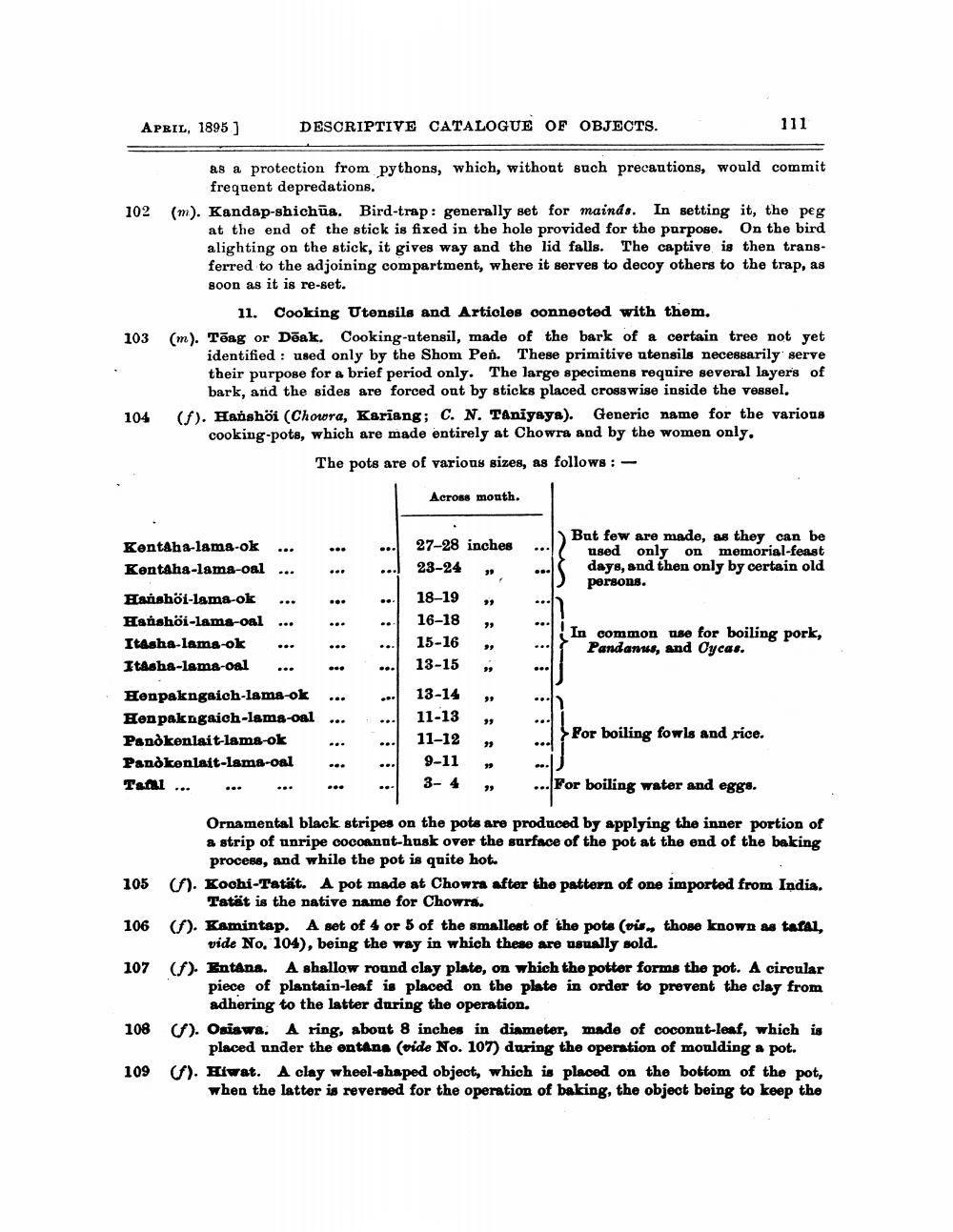________________
APRIL, 1895]
102
103
104
Kentaha-lama-ok Kentaha-lama-oal
Hanshöi-lama-ok Hanshöi-lama-oal
Itasha-lama-ok
Itasha-lama-oal
105
106
as a protection from pythons, which, without such precautions, would commit frequent depredations,
107
(m). Kandap-shichūs. Bird-trap: generally set for mainds. In setting it, the peg at the end of the stick is fixed in the hole provided for the purpose. On the bird alighting on the stick, it gives way and the lid falls. The captive is then transferred to the adjoining compartment, where it serves to decoy others to the trap, as soon as it is re-set.
108
11. Cooking Utensils and Articles connected with them.
(m). Teag or Deak. Cooking-utensil, made of the bark of a certain tree not yet identified used only by the Shom Peň. These primitive utensils necessarily serve their purpose for a brief period only. The large specimens require several layers of bark, and the sides are forced out by sticks placed crosswise inside the vessel. (f). Hanshöi (Chowra, Kariang; C. N. Taniyaya). Generic name for the various cooking-pots, which are made entirely at Chowra and by the women only.
The pots are of various sizes, as follows: -
Across mouth.
109
...
...
Henpakngaich-lama-ok Henpakngaich-lama-oal
Panòkenlait-lama-ok
Panòkenlait-lama-oal Tafal ...
...
DESCRIPTIVE CATALOGUE OF OBJECTS.
...
...
...
...
...
27-28 inches 23-24
18-19
16-18 15-16 13-15
13-14 11-13 11-12 9-11
3-4
99
29
39
111
39
29
But few are made, as they can be used only on memorial-feast days, and then only by certain old persons.
In common use for boiling pork, Pandanus, and Cycas.
For boiling fowls and rice.
For boiling water and eggs.
Ornamental black stripes on the pots are produced by applying the inner portion of a strip of unripe cocoannt-husk over the surface of the pot at the end of the baking process, and while the pot is quite hot.
(f). Kochi-Tatät. A pot made at Chowra after the pattern of one imported from India. Tatät is the native name for Chowra.
(f). Kamintap. A set of 4 or 5 of the smallest of the pots (vis., those known as tafal, vide No. 104), being the way in which these are usually sold.
(f). Entana. A shallow round clay plate, on which the potter forms the pot. A circular piece of plantain-leaf is placed on the plate in order to prevent the clay from adhering to the latter during the operation.
(f). Osiswa. A ring, about 8 inches in diameter, made of coconut-leaf, which is placed under the entâna (vide No. 107) during the operation of moulding a pot. (f). Hiwat. A clay wheel-shaped object, which is placed on the bottom of the pot, when the latter is reversed for the operation of baking, the object being to keep the




